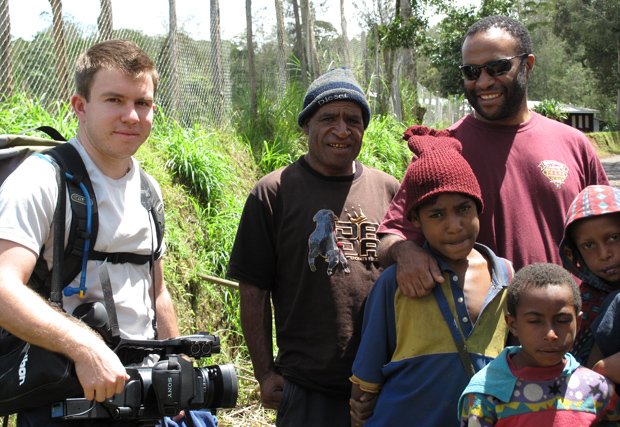Searching for the Tasmanian tiger in PNG

IN DECEMBER 2010, the AG Society-sponsored adventurer Andrew Hughes headed into the wilderness in an attempt to see if the Tasmanian tiger, or thylacine – declared officially extinct in 1986 – continues to persist in any remote pockets (see video below) of Tasmania – and surprisingly, New Guinea.
His eight-week, two-part adventure began on foot as he traversed remote regions of south-west Tasmania. He then travelled to the Southern Highlands of Papua New Guinea (PNG) – where thylacine fossils have been found – and learnt about traditional hunting practices, before paddling down the Strickland River in a dugout canoe. “These two very different environments [Tasmania and PNG] were both home to the Tassie tiger historically,” he says.
In fact in geological history, when sea levels where much lower, New Guinea was joined to Australia by a land bridge across the Torres Strait. New Guinea shares many species with Australia such as echidnas, quolls, tree kangaroos, possums and birds of paradise.
Unfortunately, Andrew didn’t find any evidence for the continuing existence of the thylacine in either location. There was another purpose to the trip, however: it was the fourth in Andrew’s Expedition Class series, which teaches Australian schoolchildren about science and the environment by coupling learning with adventure. More than 2000 children followed Andrew’s daily web reports and interacted with him.
Andrew’s past Expedition Class adventures included sea kayaking from Hobart to Cape York, paddling 2300 km from PNG’s Port Moresby to the Irian Jaya border, and a seven-month, 15,000 km journey to the highest peak in each Australian state and territory by foot, kayak and bicycle.
VIDEO: Highlights of Andrew Hughes’ expedition to track the history of the Tasmanian tiger
RELATED STORIES

